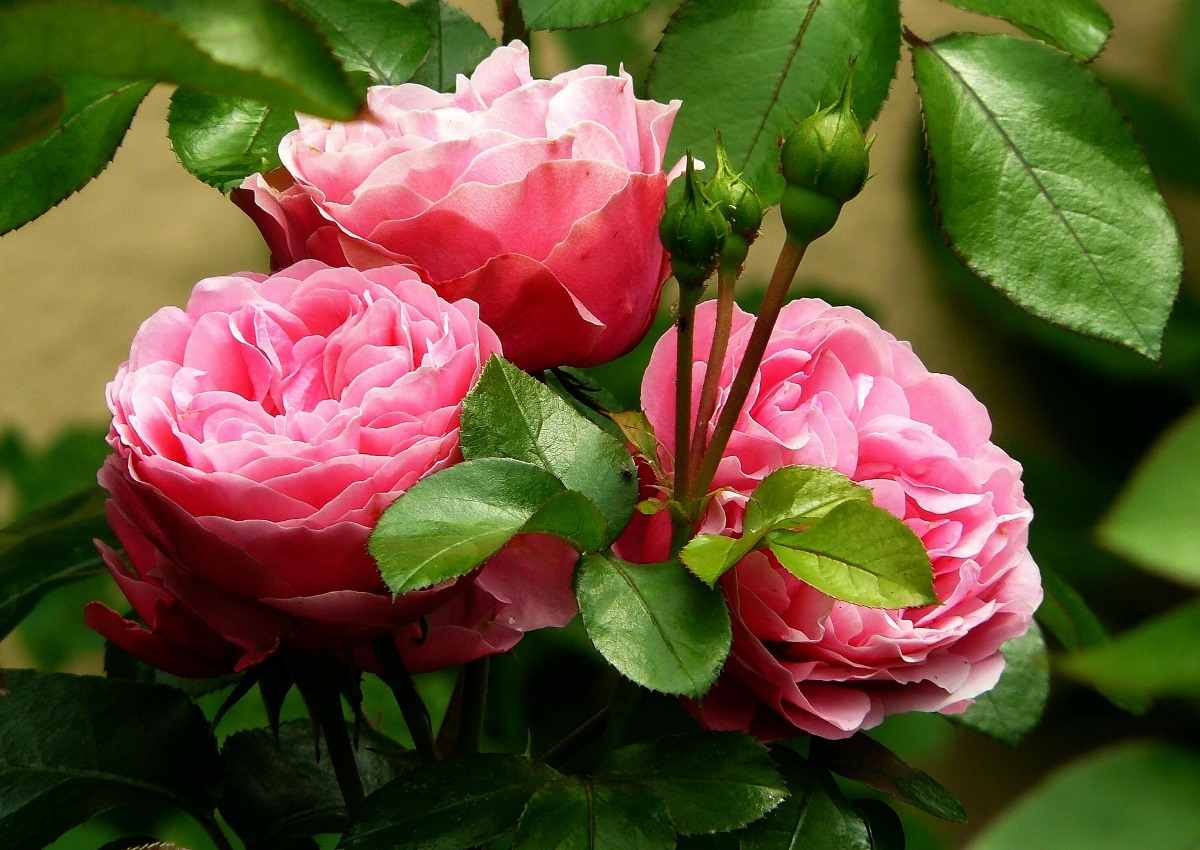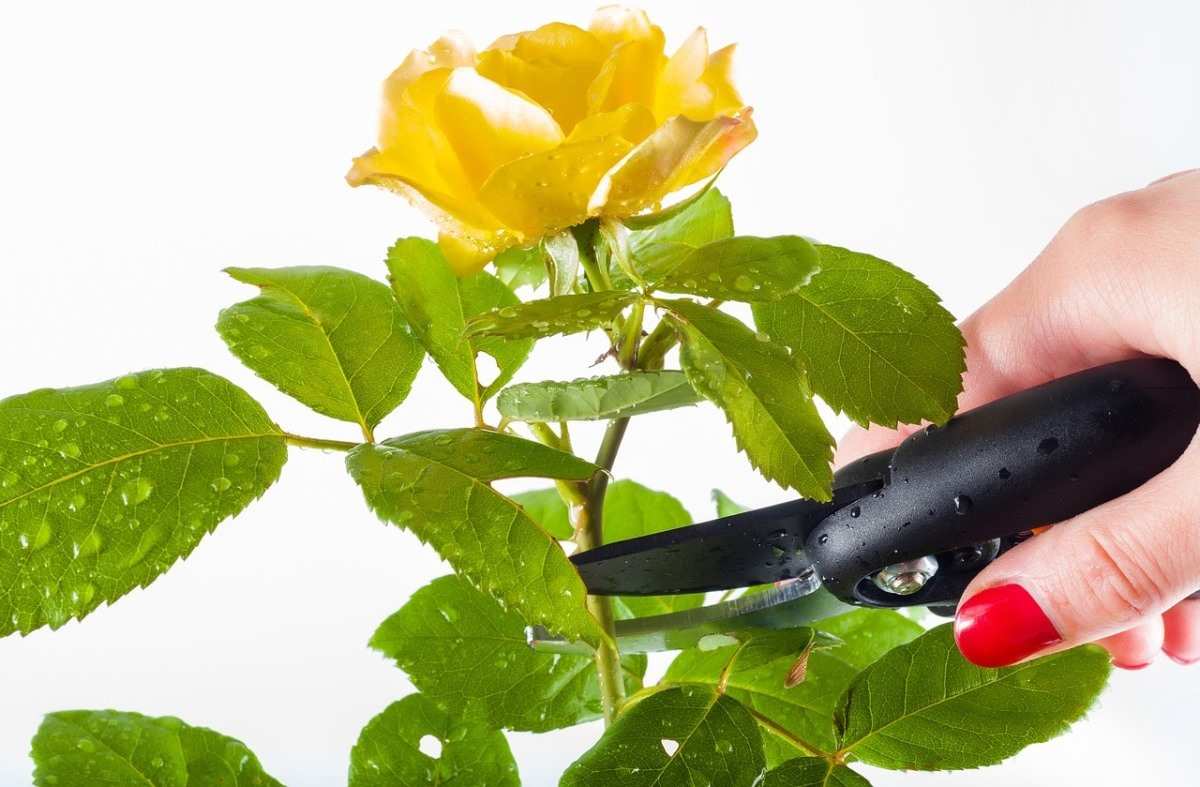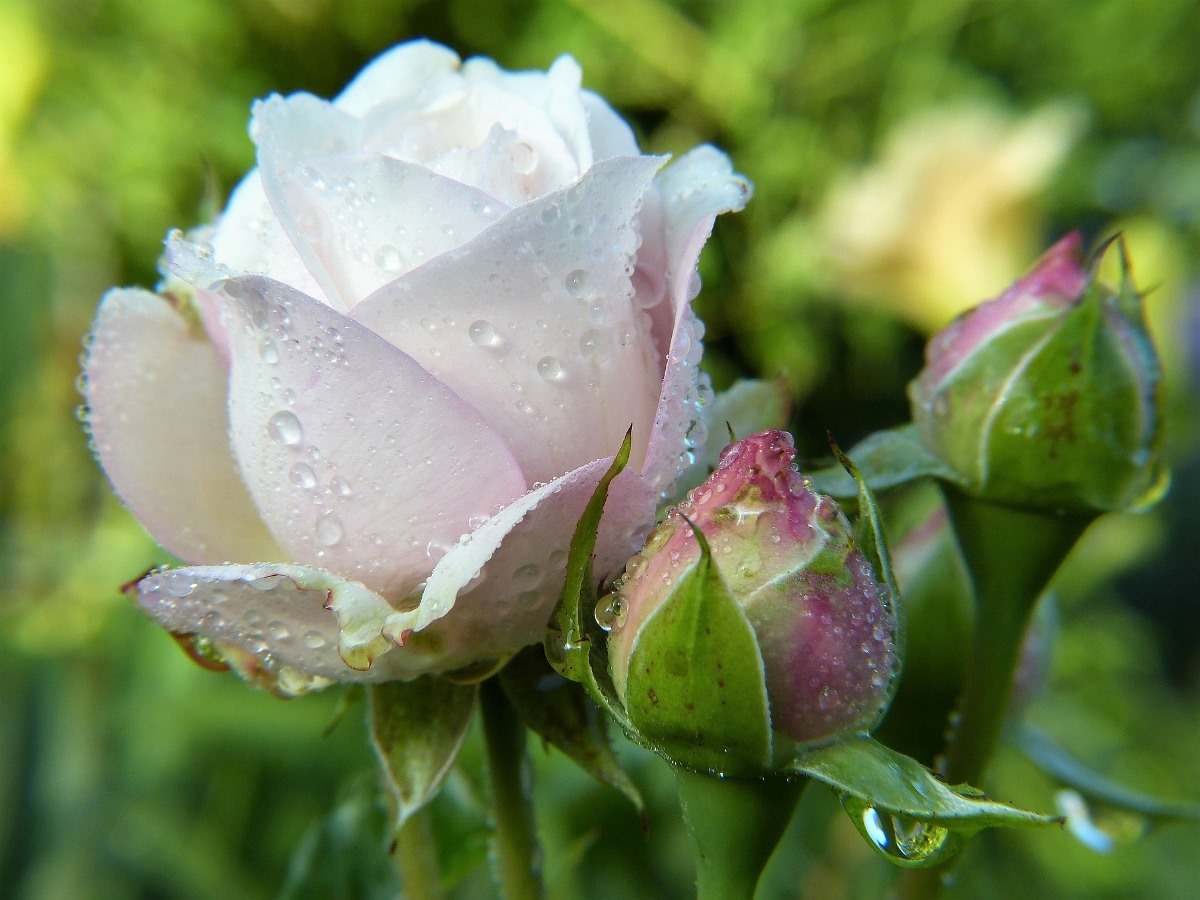Growing Rose Flowers in Greenhouse
Hello gardeners, we are here with a new and beautiful topic. Are you interested in growing rose flowers in a greenhouse? Well, in this new article we are going to discuss how to grow Rose flowers in a greenhouse. We also discuss all the requirements and related topics of growing rose flowers in a greenhouse. This information may be useful for the cultivation of roses in protected environments such as Greenhouse and Polyhouse.
Introduction to Growing Rose Flowers in Greenhouse
A rose plant is a woody perennial flowering plant and belongs to the genus of Rosa, in the family Rosaceae, or the flower it bears. There are over three hundred rose species and tens of thousands of rose planters. They form a group of different rose plants that may be erect shrubs, climbing, or even trailing, with stems that are often armed with very sharp prickles.
Step By Step Guide for Growing Rose Flowers in Greenhouse
- Flower Garden Designs and Layouts for Beginners
- Planting and Spacing Techniques in Papaya: A Beginner’s Guide
- Growing Gold: Essential Techniques for Planting Pineapples
- How to Make Kalanchoe Plant Bushy: Home Remedies and Solutions
- 11 Reasons Why Your Gardenia is Not Blooming: Home Remedies and Solutions
- Eco Elegance: The Guide to Designing a Drought-Tolerant Landscape
- Gardening on a Slope: Strategies for Hillside Landscaping
- Nourish and Flourish: Top Organic Mulches for Thriving House Plants
- Everything You Want to Know about Indian Mogra Flower: Discover Uses and Growing
- Green Thumb Success: Expert Tips for Cultivating Greenhouse Pumpkins All Year Round
- Maximize Growth & Flavor: The Ultimate Guide to Companion Planting in Herb Gardens
- How to Control Rhododendron Problems Naturally: Home Remedies and Organic Ways to Fix Them

As we all know that Rose flowers can easily symbolize many different things such as love, friendship, elegant beauty, and to name a few, this is just because of their variety and inspiration. Having a rose plant in your greenhouse may bring a beautiful look to your greenhouse.
Types/Varieties for Growing Growing Rose Flowers in Greenhouse
The most common varieties/types of rose flowers to grow in a greenhouse are listed below:
- Grand Gala
- First Red
- Golden Gates
- Mercedez
- Konfetti
- Starlite
- Vivaldi
- Ravel
- Noblesse
Choosing Rose Flowers for Growing In Greenhouse
As with choosing any rose plant to grow, better consider your climate and the size of your greenhouse when making your plant selection. This may set you up for success. Growing rose flower in a greenhouse may reduce exposure to pests and diseases and they would be subject to outside. Many rose plant varieties are naturally resistant to disease, making it very easy to keep them healthy.
Suitable Pots for Growing Rose Flowers in Greenhouse
Most Rose plants grow very well in pots or containers as long as root space is sufficient and care is appropriate. Containers that are at least 2 feet in depth and at least 15 to 20 inches in diameter are very best for full-sized Rose plant varieties and the deeper container or pots are better for plant health, growth, and blooming
Suitable Soil for Growing Rose Flowers in Greenhouse
The ideal and good soil for rose flowers should be medium loam and having sufficient organic matter, proper drainage, and pH need to be from 6.0 to 7.0. For better and good root growth and better penetration of roots, the soil needs to be highly porous and well-drained.
Placing Rose Flowers Containers in the Greenhouse
Take your newly potted rose plants in your greenhouse, and then place them where they will get enough sun. At least six hours of direct sunlight every day is what your roses will need to survive well. Give them enough space so they will not cast shade on each other. We recommend or suggest placing containers at least six apart so that air can flow freely and easily between them.
Temperature Requirement for Growing Rose Flowers in Greenhouse
Generally, the greenhouse temperature needs to be maintained nearly about 20°C-21°C on cloudy days and 24°C-28°C needs to be on sunny days for very high yield and best quality. However, the ideal and optimum temperature range is 15°C to 27°C for a rose plantation in a greenhouse.
Planting Procedure for Growing Rose Flowers in Greenhouse
Plant your rose plants in the fall in containers at least 9 inches wide across the rim. Better you need to spread 1 to 2 inches of small rocks or broken crockery in the bottom of each pot to ensure free and well water drainage. Fill each rose pot halfway with very well-draining potting soil, ideally that designed for roses. Put in the rose plants and then add soil to just below the graft point and if the rose grows on its rootstock, better add soil to the faint mark on the rose stem indicating the soil level in its prior planting and then water well.
Move the pots or containers to the greenhouse and place them during a sunny location. Indoors or out, roses need a minimum of six hours of direct sun a day. Arrange the plants so that they are doing not shade one another. Space the containers a minimum of 6 inches apart to supply adequate airflow.
Prune the rose bushes severely after planting. Trim each branch to about 3 inches from the most stem. Better to make each cut just above a lateral outside-facing bud.
Water your rose plants sufficiently to stay the soil moist. The quantity of water necessary will depend on the weather; sunnier, hotter days dry out the soil quite foggy, moist ones. You should never allow the water to touch the stems or leaves. When new growth begins, fertilize with a water-soluble rose food every fortnight, applied consistent with label directions.
Maintain the greenhouse temperature at around 16°C the day and 5°C in the dark. Mulch your rose containers with a 2-inch layer of compost or shredded leaves to assist maintain soil temperature and humidity.
Pruning process for Growing Rose Flowers in Greenhouse

Using pruning shears trim or prune branches back to nearly about 3 inches from the main stem, including blooms and the buds of the plant. Plants that are with the fewest stems and leaves can create very bigger blooms. Remove all the dead branches that mean those that are brown on the inside and trim or prune away the branches that block the middle of the rose plant. This may allow for better air circulation which is very important for preventing moisture build-up.
Water and Fertilizer Requirement for Growing Rose Flowers in Greenhouse
Water your rose plants enough so that the soil is moist. The amount of water will vary based on your weather or climate conditions. On hotter or warmer days they will need more water and on rainy days they will need very less water. It is very better to keep water from touching the stems or the leaves. You need to add high phosphorus fertilizer to your plant when you see new growth from leaves, buds, or branches and then reapply it every two weeks or as recommended.
In case if you miss this: Growing Sunflower In Pots At Home.
Common Pests and Diseases of the Rose Flowers in Greenhouse
Insects and pests of the rose plant and their managements are listed below:
- Red spider mite
Red spider mites are very common pests on the rose. They will first appear on the lower surface of leaves, and they can subsequently cover the entire leaf, stem, and even after some time whole plant with their web. The infected plants may give a dusty and webbed appearance to them. These pests can be controlled by spraying Kelthane of 0.1% or Omite 0.03%.
- Caterpillar
Caterpillars are mostly a big problem of rosebuds and young leaves of it. In the initial or starting stages, they eat away all the foliage. The eggs are laid on the buds and larvae eat into the bud by damaging it entirely or completely. These caterpillars can be controlled by spraying Nuvan of 0.15 to 0.2%.
- Aphids
Aphids occur in more than 4000 aphids species. Many are vectors for several different viruses. Aphids are sucking insects that draw or suck chlorophyll from the leaves and buds of the plant. It is recommended or suggested to spray Metasystox or Malathion of 0.2 % to control or regulate aphids.
- Thrips
Among insects, thrips are the foremost serious pests on the rose. Thrips prefer dry hot conditions. Both nymphs and adults sort of this small insect and suck the cell sap from the leaves, tender stem, and flowers. It’s recommended the appliance of dimethoate and monocrotophos of 0.05-0.1% to control or regulate thrips.
- Red Scale
Red scale insect attacks on the lower part of the old stem of the rose and canopy them with reddish-brown waxy incrustation. The size insect sucks the plant sap and therefore the infested stems gradually dry up. The season is that the main period for the infestation of red-scale insects on the rose plant. These insects are often removed by rubbing the infested stems with an old soft toothbrush. These are often controlled by spraying Monocrotophos of 0.1-0.15%.
Diseases of the rose plant and their managements are listed below:
- Powdery mildew
In mildew, initially, whitish tiny spots appear on young leaves. the whole plant displays a white powdery appearance in severe cases, consequently reducing the vigour of the plant. Infected buds don’t open and in open flowers, the infection results in discoloration. The disease is often controlled by Karathane (0.1%) or Benlate (0.1%) sprays.
- Downy mildew
Downy Mildew is a very common disease of the rose plant and that occurs under moist cloudy conditions. All species of cultivated and wild rose seem to be very susceptible. Under cool and very moist spring conditions, young leaves, stems, and flowers may manifest purple to red or even brown irregular spots. As this disease advances, lesions on leaves become angular and black. This disease can be controlled or regulated by spraying Ridomil or Dithane M-45 0.2%.
- Black spot
This is a fungal disease that causes a rose plant. The infected leaves may show black spots on the upper and lower sides of it. At later stages, leaves become yellow and they may fall off. This disease can be controlled or regulated by spraying Dithane M-45 0.15%. It is also advised to have little or minor pruning during the rainy season if there is overgrowth including removal of minor and diseased shoots.
Rose Flowers Harvesting and Post-Harvest Management in Greenhouse
The flowers need to be harvested when they are at the tight bud stage and when the petals have just started unfolding. It should be harvested either in the morning or evening by using a sharp secateurs or knife. After harvesting, the rose flowers should be dipped in clean and neat water. To store cut flowers, it is recommended or suggested to place them in good quality water at 2-40°C temperature.
Commonly Asked Questions about Growing Rose Flowers in Greenhouse

Can I grow roses in a greenhouse?
Roses tend to grow more vigorously within the greenhouse than outside and flower up to 3 times a year. Undisturbed by wind and rain, the leaves are often clean and healthy, and therefore the blooms perfect. They will be planted within the greenhouse floor or a deep pot or raised bed.
What is the best month to plant roses in a greenhouse?
It is best to plant roses in spring.
Roses are best planted in the spring which means after the last frost or fall which means at least six weeks before your average first frost. Planting roses early enough in fall gives the roots enough time to get established before the plants go dormant over the winter season.
What kind of roses blooms all around the year?
Floribunda continuous flowering roses bloom all around the year.
Floribunda roses are among the longest blooming roses because they will bloom continuously from early spring to late fall, counting on the cultivar. These rose bushes commonly grow between 2 1/2 and 5 feet tall.
How many times in a year do Rose flowers bloom?
Most of the modern roses sold today may bloom somewhat regularly throughout the season. In contrast, some old garden roses and climbing roses bloom once a year or bloom only within the spring and fall. Roses that bloom regularly are called “repeat” bloomers.
Can rose flowers bloom twice?
Some different sorts of roses bloom just one occasion a year. Other rose plants may bloom several times a year, but there are periods of rest between periods of flower production. Modern hybrid tea roses, floribunda, Grandiflora, climbing roses, and lots of shrub roses will bloom several times each summer.
Do Rose flowers need a lot of water?
Soil, temperature, and surrounding plants affect what proportion of water a rose needs. In temperate climates, weekly watering is typically enough. Two inches of water every week (4 to five gallons) could also be all that’s needed. If the soil is sandy or the garden is hot, dry, or windy, more frequent watering could also be necessary.
How do Overwatered roses look like?
Chlorosis is the term for the yellowing of rose plant leaves, it has a few causes. Rosebush leaves turn into a pale green or yellow color when they suffer from chlorophyll insufficiency. When you are overwatering and lack of oxygen are to blame, a rose plant’s leaf veins turn yellow while its leaf tissue may remain green.
Can I plant 2 rose plants together?
Plant shrub roses too closely together and the border may become overcrowded. Plant too far apart and you’ll see areas of bare earth between each rose. When planting you would like to require under consideration the grown size of the rose, this suggests starting with, while your roses establish themselves, you’ll see gaps between them.